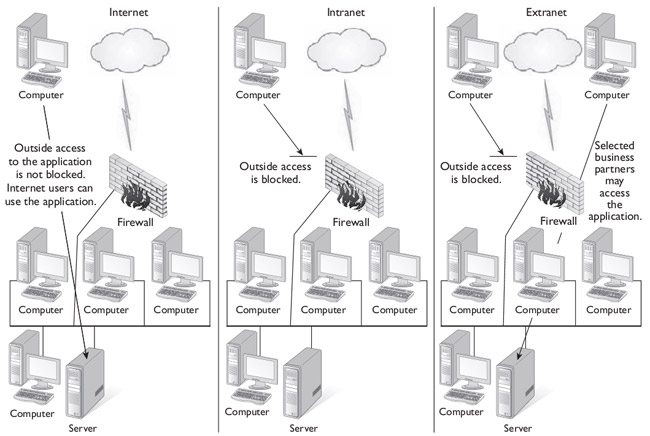آشنايي با استاندارد 802
موسسه IEEE يا Institute of Electrical and Electronics Engineers كه موسسه اي بزرگ و قابل اعتماد براي متخصصان برق است در خصوص معرفي استاندارد هاي مختلف فعاليت مي كند.
The
802 committee of the IEEE defines one set of standards dear to the hearts of
most network professionals.
دورازده كميته زير مجموعه 802، پروتكلهاي دسترسي سطح پايين LAN و WAN را معرفي كردند. بيشتر اين پروتكل ها توسط كميته اي ارائه شده كه در لايه data link و physicalاز OSI مدل 802مستقر بودند.
طبقه بنديهاي ieee 802
همانطور كه استفاده از LAN ها افزايش مي يابد، استانداردها نياز به تعريف يكنواختي و سازگاري بين توليد كنندگان دارند. IEEE اين پروژه را در سال 1980 شروع كرده كه به پروزه 802 مشهور شده. IEEE 802 مجموعه اي از استانداردها است كه در جدول زير نمايش داده مي شوند:
Identifying the
OSI Layer for
Popular Protocols
and Services
802 Project Standards
101
to the various LAN architectures such as Ethernet, Token Ring, and ArcNet by the
LAN standards committee. The goal of the committee was to define more of the
OSI’s data link layer, which already contained the LLC and MAC sublayers. Several
802 subcommittee protocols are the heart of PC networking. Although there are
a number of 802 project categories, a few of them are focused on for the exam and
therefore will get a little more focus here in this section.
802.11
استاندارد IEEE 802.11، استانداردي است كه با آن، شبكه هاي بيسيم آدرس دهي مي شوند. اين استاندارد، شامل دستگاه wireless access point (WAP) و كارت سبكه بيسيم مي شود كه براي ارسال و دريافت broadcasts هاي cell يا WAP استفاده مي كنند.
WAP ها و كارتهاي شبكه بيسيم مي توانند براي جلوگيري از overlap از فركانسهاي مختلفي استفاده كنند.
اين تكنولوژي همان تكنولوژي نيست كه توسط cellاستفاده مي شود. تلفن ها براي مديريت حركت در كامپيوترها و ابزارهاي موبايل ايتفاده مي شوند. يك كارت شبكه بيسيم در فركانسي خاص تنظيم مي شئد و بايد به صورت دسيتي نيز تنظيم شود تا بتواند با يك cell ارتباط برقرار كند.
phones to manage movement of PCs or mobile devices.
هر كارت شبكه بيسيم (wireless NIC) به صورت پيش فرض داراي فركانس خاصي است كه بايد براي ارتباط با كارت شبكه بيسيم ديگر به صورت دستي تغيير پيدا كند. اين به آن معنا است كه ي كامپيوتر از محدوده يك cell به محدوده cell ديگر بدون تغيير فركانس قابل جابجايي نيستبه دليل تفاوت فركانس ها و احنمال روي هم افتادن و هم پوشاني فركانسي.
تعدادي استاندارد وايرلس توسط IEEE 802.11 تدوين و عرضه شده است كه به شرح زير مي باشند:
There are a few wireless standards that were developed in the
category, and those are listed as follows:
n 802.11a Supports speeds of 54 Mbps at
frequencies ranging from 5.725 GHz to
5.850 GHz. 802.11a wireless components
are not compatible with 802.11b devices.
n 802.11b Supports speeds of 11 Mbps at
frequency ranges of 2.400 GHz to 2.4835
GHz. 802.11b wireless components are
compatible with 802.11g devices, which use
an enhancement of the 802.11b standard.
t abLe 2-2
Some Popular
ethernet I eee
802.3 Project
Standards
There are other wireless
standards in the IEEE 802.11 project
category, but these four are the most
popular and you should be familiar with
them for the exam.
104
Chapter 2: Network Protocols and Standards
n 802.11g Supports speeds of 54 Mbps at the same frequency range as 802.11b,
which allows devices from the two standards to coexist. For example, I have
an 802.11b wireless access point, but I am connected to it with my 802.11g
wireless network card. I am getting only the 11 Mbps transfer rate because it is
the lowest common denominator between the two standards.
n 802.11n Is a new wireless project that runs at 5 GHz or 2.4 GHz and is
backward compatible with 802.11a/b/g standards. The goal of 802.11n is to
increase the bandwidth and the range. 802.11n has data transfer rates of over
100 Mbps!
You will need to be familiar with the IEEE 802 projects that have been
mentioned, and the exam will focus on those, but you should be familiar with the
other 802 standards as well. Table 2-3 lists most of the 802 project standards.
Project Description
802.1 Internetworking
802.2 Logical link control
802.3 Ethernet
802.4 Token bus
802.5 Token Ring
802.6 Metropolitan area network (MAN)
802.7 Broadband technology
802.8 Fiber-optic technology
802.9 Voice and data integration
802.10 Network security
802.11 Wireless networking
802.12 Demand priority networking
Expect to be asked about
the IEEE standards on the exam, especially
the ones that map to Ethernet, Token Ring,
and wireless.

